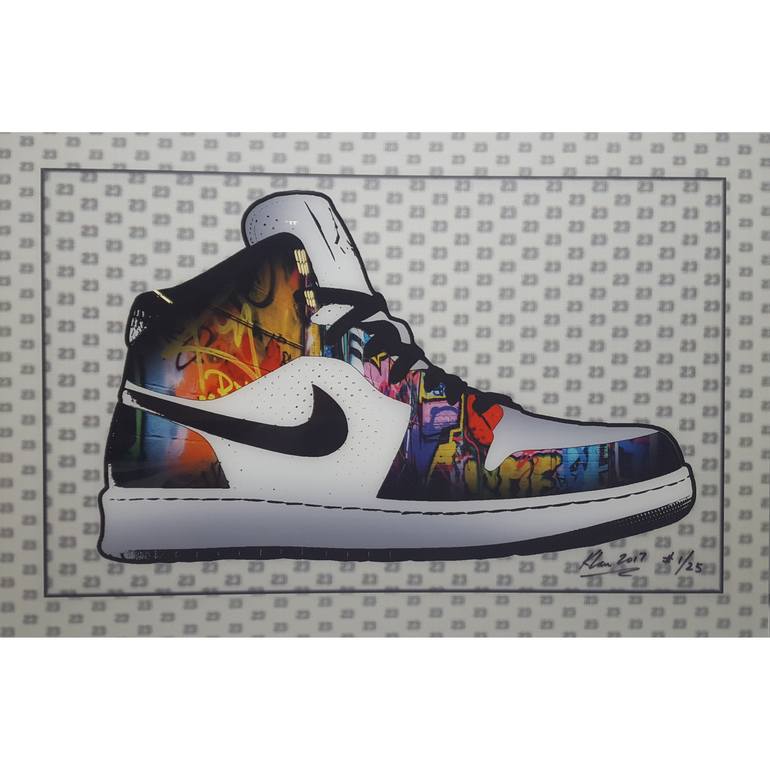


378 Views
3
View In My Room
ABOUT THE ARTWORK
DETAILS AND DIMENSIONS
SHIPPING AND RETURNS
The Graffiti Sneaker is an expression of the artists' dreams to get recognition back in the days, yet was unable to afford any. The Graffiti design illustrates the urban environment when growing up in Harlem. The Sneaker is surrounded by 3D optics with a number 23 to create the pattern of depth ill...
Year Created:
2017
Subject:
Styles:
Mediums:
Collage, Plastic
Rarity:
One-of-a-kind Artwork
Size:
36 W x 24 H x 0.1 D in
Ready to Hang:
Not Applicable
Frame:
Not Framed
Authenticity:
Certificate is Included
Packaging:
Ships in a Box
Delivery Cost:
Shipping is included in price.
Delivery Time:
Typically 5-7 business days for domestic shipments, 10-14 business days for international shipments.
Returns:
14-day return policy. Visit our help section for more information.
Handling:
Ships in a box. Artists are responsible for packaging and adhering to Saatchi Art’s packaging guidelines.
Ships From:
United States.
Need more information?
Need more information?
Keng Lau
United States
Raised in Harlem, NY, and later Brooklyn, NY Keng’s artwork is heavily influenced by the inner city urban hip hop and street culture. Many of his iconic images were imagined and inspired by the struggle of not having the means to fit in. As a Chinese American transplant, living in poverty in the early 1980s, Keng was constantly ridiculed, racially discriminated against and bullied for living in a community of minorities. Keng was given the slave name: “Chicken Wing” and the cultural mind set was, if one did not have brand name clothing, one was an outcast. His peers created a hierarchy based on having the best “threads” and “kicks” and only then one was respected. Keng’s ever-wanting to be “fresh” back in the days, required the popular yet expensive street attire, to be socially accepted. Unfortunately, he would never achieve this so-called “acceptance”, not with four dollar skips and clothing either donated or made by his mother. As a direct result of this, Keng was called: the “Ching Chong Wong” with “Hong Kong Pants” by his peers. It was not until he was able to work and earn his own money that he finally was able to afford what he wanted, but then he realized it was all a gimmick. He did not need any longer the respect to fit in with his peers in the inner city. These people back then were cruel and were of a predatory mind set. He realized this as he moved out of Harlem, where he did not fit in. As Keng reflects back to his childhood, all of these experiences have influenced his art a great deal. The hard work ethics of his parents juxtaposed with the dreams of an underprivileged child shine through in all of Keng's work. Keng found a way to survive and adapt through hard work and artistic creations and he labels his work as Iconicism; showing both a celebration and extreme criticism of American cultures as it pertains to his life, and relevant effects of popularity, and how unattainable it was to a child of poverty.
Why Saatchi Art?
Thousands of
5-Star Reviews
We deliver world-class customer service to all of our art buyers.
Global Selection of Original Art
Explore an unparalleled artwork selection from around the world.
Satisfaction Guaranteed
Our 14-day satisfaction guarantee allows you to buy with confidence.
Support Emerging Artists
We pay our artists more on every sale than other galleries.
